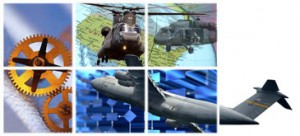The IIWARS system uses text mining technologies and information fusion to mine data from multiple, distributed text sources, extract features and “indicators” of emerging threats, and improve the DoD’s terrorist threat assessment capabilities.
While analysts and strategists are well versed in tracking threats to conventional military targets, the new asymmetric threats posed by terrorist organizations, as 9-11 has made devastatingly clear, are much more difficult to anticipate. Threats to military targets have traditionally required capabilities that are both expensive and take a long time to develop–activities that satellites and other reconnaissance are more likely to notice.
Asymmetric terrorist threats, on the other hand, are generally smaller in operation, can be mounted much more quickly, and require significantly less of a financial investment. The lighter trail makes such threats extremely difficult for traditional intelligence gathering methods to detect. But no less important–a study by the Defense Science Board Study on Transnational Threats found that “the making of connections between otherwise meaningless bits of information is at the core of (transnational) threat analysis.”
The Information-Fusion Based Indication & Warning Assessment and Recognition System (IIWARS) is tapping KBSI’s expertise in text mining technologies and information fusion to improve the DoD’s terrorist threat assessment capabilities.
 The IIWARS system begins by processing and mining, using advanced text and data mining methods developed at KBSI, data from multiple, distributed text sources (news feeds, web databases, traffic reports, radio intercepts, human intelligence). The system then uses the results of the mining to extract multiple features and “indicators” of an emerging or actual threat. These indicators are then fused by IIWARS into a threat model which is next compared to hypothesized threat Course Of Action (COA) “templates.” IIWARS will use these comparisons to present a threat assessment and suitable courses of action.
The IIWARS system begins by processing and mining, using advanced text and data mining methods developed at KBSI, data from multiple, distributed text sources (news feeds, web databases, traffic reports, radio intercepts, human intelligence). The system then uses the results of the mining to extract multiple features and “indicators” of an emerging or actual threat. These indicators are then fused by IIWARS into a threat model which is next compared to hypothesized threat Course Of Action (COA) “templates.” IIWARS will use these comparisons to present a threat assessment and suitable courses of action.
IIWARS’s innovative methods include asymmetric threat course of action templates, text and data mining for instantiating these templates for asymmetric threat assessment, information fusion, and hybrid threat learning using machine learning and ontology-assisted methods. According to Dr. Perakath Benjamin, the technical lead for KBSI on the project, IIWARS will dramatically improve homeland security operations. “The statistical nature of the text mining and pattern instantiations in IIWARS facilitates dynamic and adaptive threat monitoring and prediction. The system can successfully monitor patterns of behavior and learn from those patterns without being tied to particular contexts or even to particular languages.”
There are numerous applications for IIWARS among government agencies including emergency response planning, intelligence analysis, international narcotics smuggling prediction and response planning, coalition operations planning for both military and humanitarian missions, etc. The IIWARS technology has a significant commercial potential as well: financial fraud detection, business intelligence, supply chain monitoring and management, epidemiology applications (such as modeling and predicting epidemic outbreaks), manufacturing systems monitoring and control, etc.
